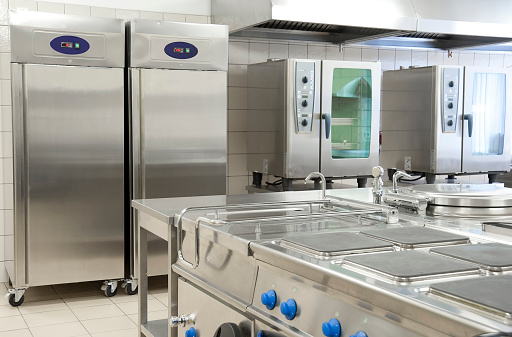The most important thing for any business in the food industry should be food safety. Restaurants, schools, hospitals, cafes, etc. all need to adhere to food and safety guidelines. Any institution that provides food to the public must keep potentially hazardous foods under specific temperatures. Controlling food temperature relates to reheating, thawing, cooling, freezing, and parasite destruction. Any food that has the potential to develop poisonous bacteria is considered hazardous. Bacteria such as E-Coli, Anisakis, and Salmonella can quickly multiply under specific temperatures. If the correct cooking, cooling, and freezing methods are used, the risk of these bacteria growing is mostly eliminated.
Hazardous foods
- Food made with nuts, beans, eggs, and other protein-rich sources like fresh pasta, quiche, and soy products
- Processed vegetables and fruits like cut melons and salad
- Cooked pasta and rice
- Dairy products
- Raw and cooked seafood
- Raw and cooked meat
- Any food that contains the foods above like sandwiches or bakery products
Non-hazardous foods
- Canned and bottled food
- Bread and dried foods
- Dried fruit
- Fermented dried meats
- Hard cheese
- Spreads
- Raw whole vegetables and fruits are not technically hazardous but should be adequately refrigerated to prevent spoilage and meet its shelf life
Parasite destruction
This is necessary for ready-to-eat foods. Before sale or service, these foods should be chilled to a temperature of:
- -35C or less for 15 hours in a blast freezer
- -20C or less for one week in a freezer
A blast freezer is cheaper, safer, and quicker than a regular freezer and helps maintain the quality of the products. Using a blast freezer also prevents food from forming ice deposits when thawing. These deposits cause the taste and texture of the food to deteriorate. Any establishment that sells raw seafood would benefit immensely from using a blast chiller. Food that thawed after being blast-chilled looks and tastes as good as the never-frozen products. This is huge for restaurants as they can buy seasonal products in abundance and preserve it with minimal profit and quality loss.
Cooling
Food should be stored at below 5C or above 60C to slow or prevent the growth of harmful bacteria. Food prep should be done quickly to avoid too long of an exposure to room temperature. You should not let food cool down unless it is above 60C. Some bacteria can even survive the cooking process, so be sure to have a sanitized thermometer on hand to check the temperature of the food as you cook. It can take food a while to cool down, even in a cold room or refrigerator. The longer it takes food to cool down, the more bacteria it could have in it. You can lower the temperature of food that has just been cooked to 5C or less in as little as 90 minutes with a blast chiller.
Thawing
This is one of the more delicate processes in a kitchen and could easily be carried out safely because of tight schedules. Some kitchen staff even resort to running water or a microwave to thaw food quickly, but both of these options can be damaging. Direct contact with water is not recommended, and microwaves can change the protein content in food, compromising its quality. Blast freezers can quickly defrost food safely and while keeping its quality intact. Thawing food in a fridge is safe, but also extremely slow. The temperature in a blast freezer starts at 20C with high humidity and less air circulation and then drops as time goes on to thaw wholly and safely.

